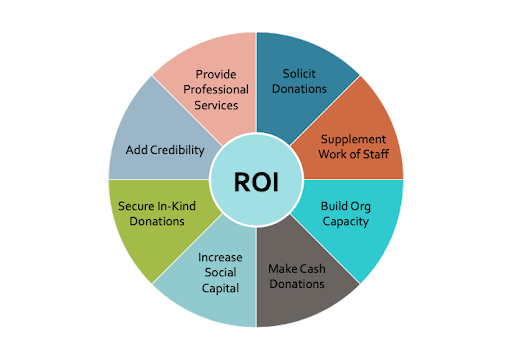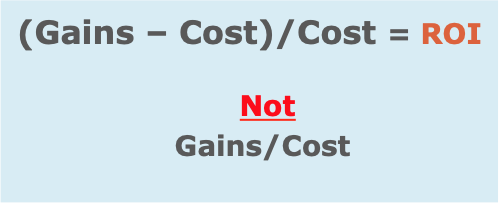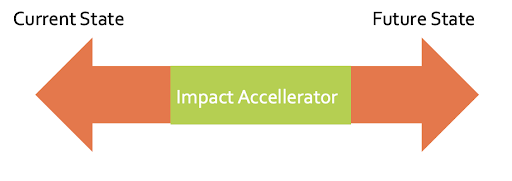
How To Accelerate True Change In Your Volunteer Program
What’s Your “Delta?”
What’s your volunteer program “delta”? No, not the alluvial deposits at the mouth of a river.
Rather, as you build a volunteer program strategic plan, what is the change you hope to bring about?
Do you know?
If you don’t know your delta, chances are you don’t know where you stand now, you won’t know which direction to head next, you won’t know whether or not you’ve arrived at your destination.
When we think about volunteer impact as a delta, we often jump to number of hours logged. But, real volunteer impact isn’t about the number of hours volunteers contribute. Real impact is about facilitating true change.
3 Steps to Developing a Volunteer Program Strategic Plan & Implementing True Change
To understand what true change we want to accomplish, we must know where we stand in our current state and where we want to end up.
Read on to find out how to calculate your volunteer program’s current status, determine where you’d like to be in the future, and implement the necessary volunteer program strategic plan (or delta) to get you there.
Step 1: Determining ROI
Sometimes we think of impact in terms of return on investment (ROI). Does invested volunteer time and invested organizational resources reflect positive return for the community.
Your effectiveness and ability to stretch program resources matter to different stakeholders – executive leadership, members, volunteers, etc. Here are some ROI areas you can track to demonstrate impact:
- Deep assessment of your organization’s assets and liabilities
- Determine the impact of program changes
- Justify investments in improving volunteer coordination
- Identify specific areas for volunteer appreciation
- Demonstrate effective use of contributions
- Provide evidence of community in-kind support for grant proposals
- Paint a more complete organizational picture
- Market the volunteer function inside and outside the organization
- Remove some of the guessing game & build trust
Providing clarity in these areas increases your volunteer program’s credibility and demonstrates overall effectiveness.
The ROI of Volunteer Engagement

Leaders of volunteers already see the myriad ways volunteers aid nonprofits. They add so much more than an extra pair of hands to your organization.
Volunteers can:
- Provide professional services
- Solicit donations
- Supplement staff work
- Build organization capacity
- Make cash donations
- Increase social capital
- Secure in-kind donations
- Add credibility
As you can see, volunteer return on investment can be huge for your overall organization. So, being able to demonstrate this impact to stakeholders is of utmost importance. Calculating ROI makes abstract impact areas into concrete examples.
 Calculating ROI
Calculating ROI
ROI can be determined using a simple formula. Gains are volunteer hours, financial contributions, and other benefits; costs are those associated with supporting volunteers.
ROI = (Gains – Cost) / Cost
Step 2: Addressing Your Need for Change
Return on investment is a great place to start. But, volunteer ROI doesn’t really represent the actual changes brought about by volunteers.
Impact is really about transformation and meaningful outcomes. Most impact centers on three areas:
- Change in KNOWLEDGE (What do people now know as a result?)
- Change in BEHAVIOR (What do people now do as a result?)
- Change in STATUS QUO (What has changed as a result?)
These might be changes in the people you serve, the environment, the community, or volunteers themselves.
To help explore these changes, consider your current state and your future, desired state. What is standing between you and your desired state? In other words, what is the gap?

Here’s an example:
Current State: Volunteer retention is declining and volunteers seem reluctant to give their time.
Future, Desired State: Volunteers who love your nonprofit and are committed for the long haul.
Gap: Staff and volunteer expectations haven’t been clearly outlined, so volunteers don’t have the necessary trust to fully commit.
Figuring out the gap might take some speculation, but once you’ve got an idea of what needs to change, you can actually start moving forward with your volunteer program strategic plan.
Step 3: Driving Performance
This is where you delta comes in. What kinds of interventions might help you close the gap in your volunteer program strategic plan?
Will one of the following get you where you need to be?
- Training – often more training isn’t the answer, but for your purposes it could be. Check out the rest of the list before you settle on it
- Clarifying Performance Expectations – maybe your volunteers aren’t sure what is expected of them
- Setting Up Feedback Systems – perhaps a bit of accountability would increase performance
- Elimination of Task Disrupters – is too much time being spent at the communal Keurig?
- Job or Role Redesign – tweaking responsibilities and moving positions can up productivity
- Organizational or Program Redesign – does the problem lie in outdated procedures or policies?
- Environmental Redesign – maybe an extroverted volunteer needs to be moved into an office with more people; maybe an introverted volunteer needs to be taken off the reception desk
- Process Redesign – are you losing people in a never-ending onboarding process?
- Incentives/Consequences – a simple thank you letter goes a long way as an incentive
- Motivation Systems
- New Resources – is your technology outdated?
- Increased Management Support – do your volunteers feel like they are heard and known?
- Increased Technical support – maybe your tech isn’t outdated, but your volunteers don’t know how to use it
- Change Management Strategies – do you need buy in for these upcoming changes?
- Job Aids
Consider which might help you achieve you delta in the least amount of time.
Final Questions to Ask Yourself
Finally, think about whether the investment in time, energy, and resources makes sense to help you achieve your desired state.
Don’t forget to factor in the possible consequences of your volunteer program improvements.
For example, ask yourself —
- How will increased volunteer capacity benefit your organization?
- How will a more robust volunteer corps impact the financial health of your nonprofit?
It may make the investment worth it in the long run.
Accelerate Your Impact With This Free Worksheet
This time saving tool will help you close the gaps between your current and future state by helping you …
- Pinpoint specific gaps in your volunteer program strategic plan you may need to address
- Brainstorm ways you can bring about change (or your “delta”) using interventions that accelerate you transformation from current to future state
- Consider the investments you may need to make to help you scale quickly





